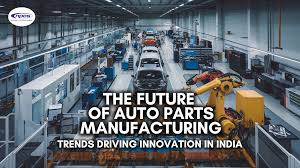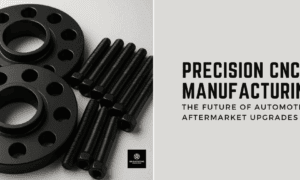In an age marked by increasing environmental concerns and a growing need for sustainable living, the automotive industry has taken substantial strides toward shaping a greener and more eco-friendly future. The transformation is rooted in advanced automobile technology, which has given rise to electric vehicles, fuel-efficient systems, and an overall commitment to reducing the carbon footprint. This article explores the remarkable journey of the automotive sector in its quest to foster eco-friendly transportation, providing a comprehensive overview of the green revolution that’s reshaping our roads and the way we perceive modern mobility.
Introduction
The Need for Eco-Friendly Transportation
The 21st century is witnessing unprecedented growth in global population, and with it, a surge in the demand for transportation. As urban centers continue to expand, the number of vehicles on the road has soared, and so has the impact on our environment. The combustion of fossil fuels in conventional gasoline and diesel engines contributes significantly to greenhouse gas emissions, air pollution, and climate change. Recognizing the urgency of the situation, there’s an increasing need to address the environmental challenges posed by our reliance on traditional vehicles.
The Green Revolution Takes Root
The green revolution in the automotive industry represents a conscious effort to mitigate these issues and transition to more sustainable, eco-friendly transportation options. Several key factors have contributed to this evolution.
Electric Vehicles (EVs)
One of the most transformative developments in recent years has been the widespread adoption of electric vehicles. EVs run on electricity rather than gasoline or diesel, thereby producing zero tailpipe emissions. Leading automakers like Tesla, Nissan, and Chevrolet have been at the forefront of this technological shift. With the rapid expansion of charging infrastructure and advancements in battery technology, electric vehicles are becoming increasingly practical and accessible to the masses.
Hybrid Technology
Hybrid vehicles, which combine an internal combustion engine with an electric motor, offer a bridge between traditional cars and fully electric ones. These vehicles can switch between the two power sources, allowing for improved fuel efficiency and reduced emissions. Toyota’s Prius, one of the pioneering hybrid models, has set the standard for this technology and inspired other manufacturers to follow suit.
Fuel-Efficient Combustion Engines
Traditional internal combustion engines have not been left behind in the green revolution. Automakers have invested heavily in making gasoline and diesel engines more fuel-efficient. This involves using lightweight materials, optimizing aerodynamics, and implementing advanced fuel injection and turbocharging technologies. These innovations reduce emissions while still catering to drivers who may not be ready to make the switch to electric vehicles.
Alternative Fuels
In addition to electric and hybrid technologies, the automotive industry is exploring alternative fuels, such as hydrogen and biofuels. Hydrogen fuel cell cars, such as the Toyota Mirai and Hyundai Nexo, create emission-free power from hydrogen. Biofuels, made from organic matter, emit fewer pollutants in conventional engines compared to gasoline or diesel.
The Role of Autonomous Vehicles
The green revolution is not limited to the propulsion systems of vehicles; it also encompasses the way we drive them. Autonomous vehicles, or self-driving cars, are making headway in the automotive industry. While their primary goal is to improve road safety and reduce traffic congestion, they can also contribute to eco-friendly transportation. Self-driving cars are more efficient in terms of speed, braking, and following distances, which can lead to lower fuel consumption and reduced emissions.
Reducing Carbon Footprints
Reducing the carbon footprint of the automotive industry is a multi-faceted endeavor, and automakers are leaving no stone unturned. Innovations are happening across various aspects of vehicle design and production:
Sustainable Materials: Car manufacturers are increasingly using sustainable materials in vehicle construction. This includes recycled plastics, natural fibers, and even materials like bamboo and cork. These materials are not only eco-friendly but also help reduce the overall weight of vehicles, improving fuel efficiency.
Energy-Efficient Manufacturing: Many automakers are revamping their production processes to be more energy-efficient. Using renewable energy sources like solar and wind power in factories, as well as implementing energy-saving practices, is becoming the norm.
Eco-Friendly Mobility Services: Beyond vehicle production, automakers are venturing into eco-friendly mobility services. Car-sharing programs and ride-hailing services are promoting the use of electric and hybrid vehicles, reducing the overall environmental impact of transportation.
Public Policy and Incentives
The transition to eco-friendly transportation is not solely the responsibility of automakers and consumers. Government policies and incentives play a crucial role in steering the industry toward greener practices. Many countries offer incentives for electric vehicle buyers, including tax credits and rebates, while also imposing stricter emissions standards on automakers.
Challenges and Future Prospects
Despite the remarkable progress in eco-friendly transportation, several challenges remain. The infrastructure for charging electric vehicles is still evolving, and the range limitations of EVs pose obstacles for long-distance travel. Additionally, the disposal and recycling of batteries from electric vehicles require sustainable solutions.
In the future, we can expect further breakthroughs in battery technology, enabling longer ranges and faster charging times. The development of smart grid systems will enhance the integration of electric vehicles into the energy network, making charging more efficient and sustainable.
The role of hydrogen fuel cell vehicles is also likely to expand, especially in the commercial sector. Hydrogen has the advantage of fast refueling and long driving ranges, making it a viable option for buses, trucks, and other heavy-duty vehicles.
Conclusion
The automotive industry’s green revolution, driven by automakers, governments, and consumers, addresses transportation’s environmental challenges through electric vehicles, hybrids, fuel efficiency, sustainable materials, and practices. This progress points toward an eco-friendly transportation future as technology advances and awareness grows. The journey toward eco-friendly transportation has begun, and it’s one we can all be a part of.



































